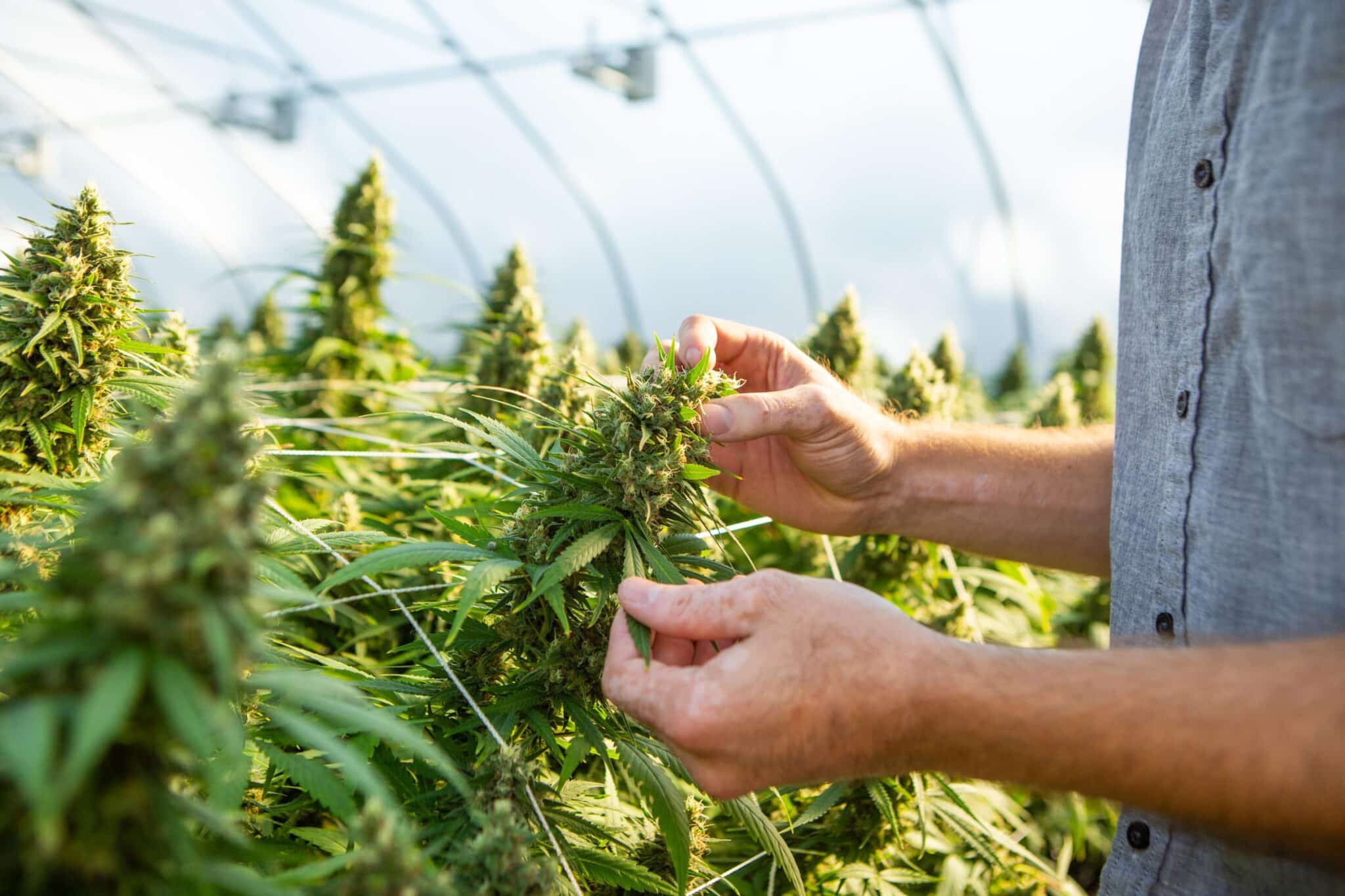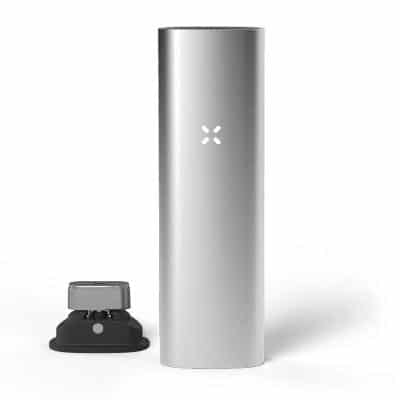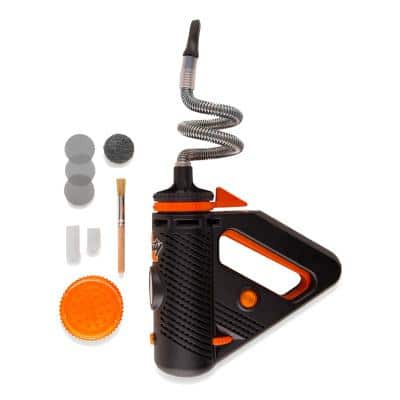

Let’s take a look at the best dry herb vaporizers. Our goal here is to help you find the right portable vaporizer that you can discretely carry to smoke the herb of your choice. Whether buying to use with hemp flower or a more THC-heavy cannabis strain, we can help you find the handheld heating chamber most likely to produce a boundless flow of quality vapor.
We understand there’s a big market for desktop vaporizers. And if battery life is a big concern, it’s always nice to be connected to a wall for long sessions. But here we are talking about the mighty and small devices you can carry with you. These you can count on for a smooth vape experience.
Without further delay, our round-up of the best dry herb vaporizers for sale online.
Top 5 Best Dry Herb Vaporizer List
PAX 3 Vaporizer – Best Overall

Slick Vapes
The PAX 3 heats up to deliver smoke within 15 seconds, and consequent heat-ups come quickly too. That’s what makes this product a standout. It keeps heat and gets you to good faster than most dry herb vapes. Pax is a brand known for its vapor quality and durable vape bodies. The brand’s portable devices use a conduction heating system and a strong 3500 mAh battery, which will last about ten sessions. Keep in mind, quick heat means the potential for burnt herb, so pay attention as you get started.
Why Buy: works with dry herb and concentrates; comes with a 10-year warranty; connects to your phone via bluetooth; and comes with a free acrylic grinder
DAVINCI IQ2 Vaporizer – Smoothest Flow

Slick Vapes
The DaVinci IQ2 Dry Herb Vaporizer touts better airflow and stronger, faster conduction heating than previous models from the brand. Plus, the anodized aluminum shell is built for durability—whether you’re tossing your vape in the center console or in a book bag on the way out the door. The Davinci IQ also promises quick heat ups and a high-quality experience for all vapers when compared to the harsh hit of the water pipes of yesteryear.
Why Buy: adjustable airflow; reasonable price point; strong build quality; replaceable battery; and dual use, meaning its swappable between dry herb and concentrate
Arizer Solo 2 Vaporizer – Easiest to clean

Slick Vapes
Arizer is the best dry herb vaporizer for smoking flower. Where the picks above are great for flower and concentrates, the dual use design of the Arizer Solo 2 is built to be easy to clean. You can pull the glass mouthpiece and tube from the vape to soak in alcohol, which makes it easy to return the vaping experience to new after consistent use. With solid air path and the higher temperatures you want out of a portable vape, the Arizer Solo II beats an old bubbler or desktop vape any day.
Why Buy: lifetime warranty on the heating element, and a 2-Year warranty covering the vape device, excluding the replaceable battery; ease of use; hybrid heating, but mainly convection heating; comparable to the Firefly 2; multiple temperature settings
Plenty Vaporizer – Best for Liquids

Slick Vapes
The Storz & Bickel VOLCANO is a legendary desktop vaporizer. This handheld device from the famous vape brand is a sweet addition to the line. The Plenty comes with three screens, a liquid pad, cleaning brush, Storz & Bickel grinder, user’s manual for ease of use, and more. It’s lightweight and silent for discrete use, and has an adjustable temperature dial. It also looks pretty cool.
Why Buy: best portable vaporizer for liquid concentrates; trusted brand with a history of quality; curled vapor path; full suite of accessories included
G Pen Elite Vaporizer – Precision Temps

Slick Vapes
With precise temperature settings burnt herb is a thing of the past. The smell, the taste, no more. The G Pen Elite can hold 3/4 of a gram in its ceramic chamber, which, the brand says, is twice most portable vaporizers. But more than the size, it’s that high-quality ceramic body that matters. Unlike stainless steel products, this crafty design keeps herb from catching fire.
Why Buy: USB charger; precision temperature settings; quality accessory options; durable ceramic design
How we evaluated portable dry herb vaporizers?
The dab, the bong, that dingy old water pipe smelling up the closet—those are the days of old.
Today the portable vape market is full of options that can be difficult to understand. Convection versus conduction, glass mouthpiece versus stainless steel, which is best?
To make this list we looked at price. We were willing to pay for quality and bluetooth connectivity, but a pocketable product should be affordable—no matter how precise they promise the preset temperature control is.
After price, we read a lot of customer takes on battery life and the accessories, including the charger that came with each product.
The difference between convection heating and conduction heating is interesting in sixth grade science—but more relevant today in the context of how quickly we can heat up material. And if we want it hot fast (conduction) or to not burn up (convection).
Brands are important. We started with brands with a track record. But when it comes down to it we’re trying to vaporize marijuana or hemp flower, so portability, air flow, and ease of use were more important.
Conclusion
At 40% bioavailability (more or less), vaporizing flower an effective way to get a daily dose of your favorite flower. But smoking shouldn’t be taken lightly. Make sure the product you’re inhaling is worth the potential damage to your lungs. Like anything we put into our bodies, particularly something that can directly affect organs as important as our lungs, users should weigh the benefits and risks before buying a portable vaporizer.
Once you have decided vaping is right for you, think about ease of use, how easy a product is to clean, and how quickly it heats material. Maybe temperature control is important to you. Maybe you wand something super portable and discrete. either way, we hope this guide to the best dry herb vaporizers for sale online was helpful.

 233k
233k  41k
41k  Subscribe
Subscribe 